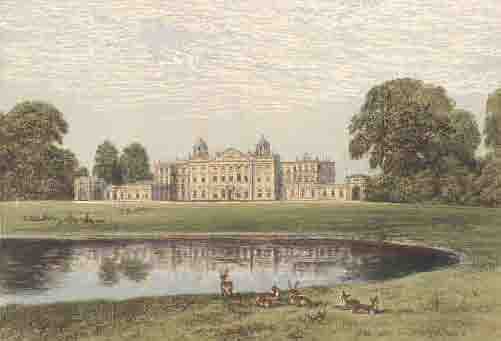“Each year, we drench our lawns with enough water to fill the Chesapeake Bay! That makes grass – not corn – America’s largest irrigated crop. Our nation’s lawns now cover an area larger than New York State, and, each year, we use about 2.4 million metric tons of fertilizer just to maintain them. When there is too much fertilizer on our lawns, essential nutrients are easily washed away by sprinklers and rainstorms. When these nutrients enter storm drains and water bodies, they often become one of the most harmful sources of water pollution in the United States” (source).
The following is a study from The International Society for Photogrammetry and Remote Sensing (ISPRS):
ABSTRACT: Lawns are ubiquitous in the American urban landscapes. However, little is known about their impact on the carbon and water cycles at the national level. The limited information on the total extent and spatial distribution of these ecosystems and the variability in management practices are the major factors complicating this assessment. In this study, relating turf grass area to fractional impervious surface area, it was estimated that potentially 163,812 km2 (± 35,850 km2) of land are cultivated with some form of lawn in the continental United States, an area three times larger than that of any irrigated crop. Using the Biome-BGC ecosystem process model, the growth of turf grasses was modelled for 865 sites across the 48 conterminous states under different management scenarios, including either removal or recycling of the grass clippings, different nitrogen fertilization rates and two alternative water irrigation practices. The results indicate that well-watered and fertilized turf grasses act as a carbon sink, even assuming removal and bagging of the grass clippings after mowing. The potential soil carbon accumulation that could derive from the total surface under turf (up to 25.7 Tg of C/yr with the simulated scenarios) would require up to 695 to 900 liters of water per person per day, depending on the modeled water irrigation practices, and a cost in carbon emissions due to fertilization and operation of mowing equipment ranging from 15 to 35% of the sequestration.
CONCLUSIONS: In this study we mapped the total surface of turf grasses in the continental U.S. and simulated its water use and C sequestration potential under different management practices for irrigation, fertilization and fate of the clippings. Rather than trying to accurately quantify the existing fluxes, we simulated scenarios in which the entire surface was to be managed like a well-maintained lawn, a thick green carpet of turf grasses, watered, fertilized and kept regularly mown. The accuracy of the results is therefore limited by both the uncertainty in the mapping of the total lawn area and by the simplifying assumptions made while modeling turf grasses growth. The analysis indicates that turf grasses, occupying about 2% of the surface of the continental U.S., would be the single largest irrigated crop in the country. The scenarios described in this study also indicate that a well-maintained lawn is a C sequestering system, although the positive C balance discounted for the hidden costs associated with N-fertilizer and the operation of lawn mowers comes at the expense of a very large use of water, N, and, not quantified in this study, pesticides. The model simulations have assumed a conservative amount of fertilization (a maximum of 146 kg N/ha/yr). In general the rates of N applications are similar to those used for row crops, and the current high-input choices made by consumers and professional turf managers for maintaining monocultures of turf grasses typical of many lawns and play fields comes at the risk, not analyzed here, of watershed pollution due to improper fertilization and use of pesticides. If the entire turf surface was well watered following commonly recommended schedules there would also be an enormous pressure on the U.S. water resources, especially when considering that drinking water is usually sprinkled. At the time of this writing, in most regions outdoor water use already reaches 50-75% of the total residential use. Because of demographic growth and because more and more people are moving towards the warmer regions of the country the potential exists for the amount of water used for turf grasses to increase. Beneficial effects of turf grasses, such as a carbon sequestration but also recreation, storm runoff reduction due to increased soil infiltration in occasion of intense rainfall, and removal of impurities and chemicals during percolation of the water through the root zone, could be sought by minimizing the application of fertilizers and pesticides, introduction of lower input species mixes such as clover and other so-called weeds (Bormann, 1993), on site decomposition of the grass clippings and extending the practice of irrigating with waste water rather than with drinking water.
For more on the subject, see:
- Jenkins, V. S. (1994). The Lawn: A History of an American Obsession. Smithsonian Books. ISBN 1-56098-406-6.
- Steinberg, T. (2006). American Green, The Obsessive Quest for the Perfect Lawn. W.W. Norton & Co. ISBN 0-393-06084-5.
- Wasowski, Sally and Andy (2004). Requiem for a Lawnmower.
Article by Bill Norrington







